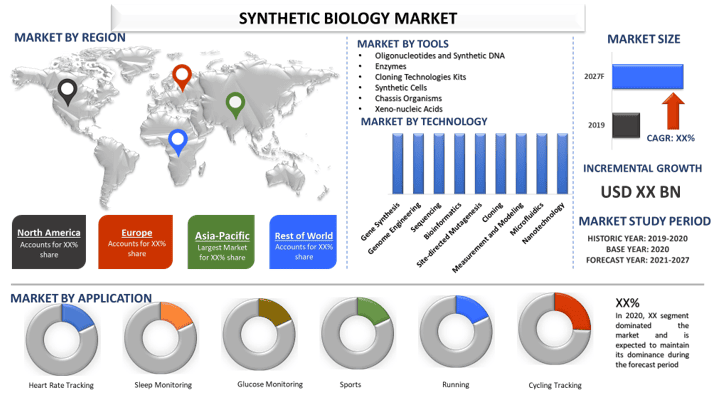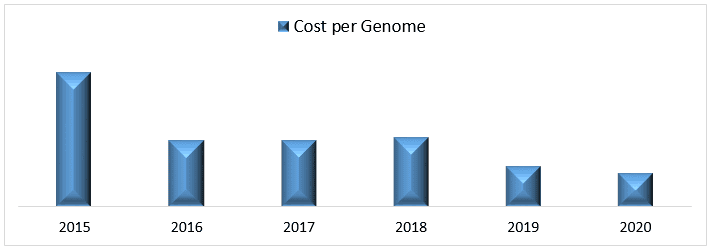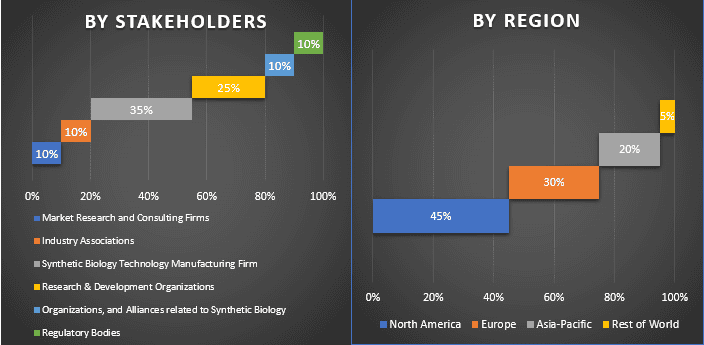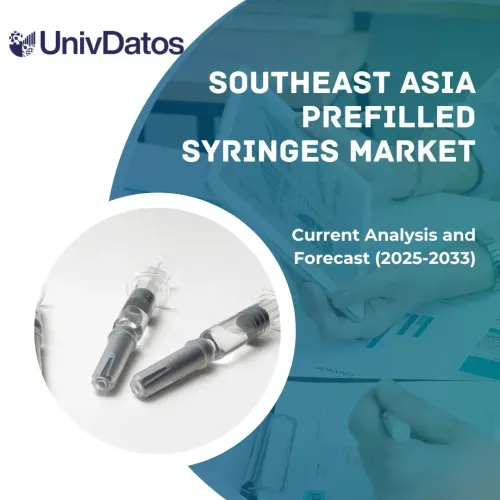- Home
- About Us
- Industry
- Services
- Reading
- Contact Us
Synthetic Biology Market: Current Analysis and Forecast (2021-2027)
Emphasis on Tools (Oligonucleotides and Synthetic DNA, Enzymes, Cloning Technologies Kits, Synthetic Cells, Chassis Organisms, Xeno-nucleic Acids); Technology (Gene Synthesis, Genome Engineering, Sequencing, Bioinformatics, Site-directed Mutagenesis, Cloning, Measurement and Modeling, Microfluidics, Nanotechnology); Application (Pharmaceuticals & Diagnostics, Chemicals, Medical Biofuels, Bioplastics, Others); Region/Country

The Synthetic Biology Market was valued at ~US$ 35 billion in 2020 and is expected to grow at a CAGR of ~20% during the forecast period (2021-2027). Synthetic biology is a developing area of biological research that syndicates both science and engineering. It mainly assists in designing and construction of the new biological devices, parts, and systems that are not present in nature and the redesigning of the existing biological systems. The advancements in nano-scale technologies are contributing to advances in synthetics biology. There are mainly two approaches that are being utilized in synthetic biologies such as the bottom-up approach and top-down approach. In the bottom-up approach, there is designing and construction of de novo biological devices or systems that do not exist in nature while in the top-down approach there is the re-designing and fabrication of already existing biological systems to produce synthetics products. The products synthesized by these approaches are utilized in many industries such as energy, bioplastics, environmental, pharmaceutical & diagnostics. The demand for the Synthetic Biology market is increasing on account of the high investments in the R&D sector. The R&D sector has generally remained capital-intensive owing to long development periods and approval cycles. R&D funding and expenditure have witnessed constant growth over the years. The demand for the Synthetic Biology market is increasing on account of the high investments in the R&D sector. The R&D sector has generally remained capital-intensive owing to long development periods and approval cycles. R&D funding and expenditure have witnessed constant growth over the years. Pharmaceuticals, as well as biotechnology companies, invest highly in research for the production of molecules to cater to the growing needs of the healthcare industry and to prevent the onset of new diseases. The R&D sector in the global pharmaceutical & Biotechnology industry accounts for about 80% of the overall R&D expenditure in the life sciences industry. Moreover, the declining cost of DNA sequencing and synthesizing, and rising investments in the market are boosting the growth of the Synthetic biology market. Furthermore, the increasing demand for biofuels, rising awareness in emerging economies offer remunerative growth opportunities in the market.
Average DNA Sequencing Costs/MB, 2020

Insights Presented in the Report
“Amongst Tools, Oligonucleotides and Synthetic DNA segment hold the major share.”
Based on Tools, the market is fragmented into Oligonucleotides and Synthetic DNA, Enzymes, Cloning Technologies Kits, Synthetic Cells, Chassis Organisms, and Xeno-nucleic Acids. The oligonucleotides & synthetic DNA segment dominated the market in 2020 and is expected to grow at lucrative during the forecasted period owing to increasing demand for synthetic genes, synthetic DNA, and synthetic RNA which are employed in a wide range of applications. Oligonucleotide synthesis is a rapidly growing process that involves the chemical synthesis of small fragments of nucleic acids with a well-defined sequence. This technique is highly used to provide rapid and inexpensive access to custom-made oligonucleotides of the desired sequence. Moreover, it is used for the molecular diagnosis of several infectious diseases such as hepatitis, SARS-COV2, and cancer. Oligonucleotides can unravel the cellular function and help in the development of new therapeutics. In February 2021, Sarepta Therapeutics Inc., the leader in precision genetic medicine for rare diseases, announced the U.S. Food and Drug Administration (FDA) approval of AMONDYS 45 (casimersen). AMONDYS 45 is an antisense oligonucleotide from Sarepta’s phosphorodiamidate morpholino oligomer (PMO) platform, indicated for the treatment of Duchenne muscular dystrophy (DMD) in patients with a confirmed mutation amenable to exon 45 skipping.
“Amongst Technology, Gene Synthesis segment holds the major share.”
Based on Technology, the market is bifurcated into Gene Synthesis, Genome Engineering, Sequencing, Bioinformatics, Site-directed Mutagenesis, Cloning, Measurement and Modeling, Microfluidics, and Nanotechnology. The Gene Synthesis segment dominated the market in 2020 and is expected to grow at lucrative during the forecasted period owing to the growing demand for synthetic DNA, synthetic RNA, and oligonucleotides across various application industries. Gene Synthesis is very useful in genome engineering which increases its attractiveness and value. Gene synthesis is highly exploited in efficient genome editing and genome targeting. Moreover, the increasing funding in genomics, focus on personalized medicine and other factors, such as patient-centered approach is fueling the market growth.
“Amongst Application, the Medical segment is anticipated to grow at the highest CAGR during the analyzed period.”
Based on Application, the market is bifurcated into Pharmaceuticals & Diagnostics, Chemicals, Medical Biofuels, Bioplastics, and Others (Environment, Agriculture & Aquaculture). The Medical segment dominated the market in 2020 and is expected to grow at lucrative during the forecasted period owing to several factors such as the extensive research on new and better treatments, coupled with the availability of huge private and public funding for the discovery of novel therapies. Synthetic biology is widely exploited for drug screening and discovery and can be used to discover new drug targeting sites. With the rapid development of synthetic biology, new tools in bioinformatics can be used to analyze potential drug targets. Computational biology and new technology can rapidly identify true protein-coding sequences from DNA sequence data, providing accurate predictions of coding vs non-coding sequences. In January 2021, Novozymes launched Frontia GlutenEx which helps wheat processors to increase their gluten protein recovery and, at the same time, cut down on energy consumption.
“North America region signifies one of the largest markets and is expected to be the fastest-growing markets of Synthetic Biology market.”
For a better understanding of the market adoption of Synthetic Biology, the market is analyzed based on its worldwide presence in the countries such as North America (United States, Canada, and the Rest of North America), Europe (Germany, France, Spain, United Kingdom and Rest of Europe), Asia-Pacific (China, Japan, India, Australia, and Rest of APAC), and Rest of World. North America will dominate the Synthetic Biology market on account of the rising applications in many areas like in agriculture, the farmers can raise yield and productivity of crops with the help of synthetic biology, high funding by research academics and private organizations for the development of novel biological products, increasing demand for synthetic cells and genes, and advancements in genetic engineering. Moreover, the rise in the number of well-established synthetic biology companies and research institutes in the Canada and US also propels market growth. Furthermore, significant R&D spending is one of the key factors contributing to the growing demand for synthetic biology tools and technologies among academic & research institutes and healthcare companies in North America. Some of the major players operating in the market include Thermo Fisher Scientific, Merck KGaA, Agilent Technologies, Inc., Novozymes A/S, Ginkgo Bioworks, Amyris, Precigen, GenScript Biotech Corporation, Twist Bioscience, and Synthetic Genomics. Several M&As along with partnerships have been undertaken by these players to boost their presence in different regions.
Reasons to buy this report:
- The study includes market sizing and forecasting analysis validated by authenticated key industry experts
- The report presents a quick review of overall industry performance at one glance
- The report covers an in-depth analysis of prominent industry peers with a primary focus on key business financials, product portfolio, expansion strategies, and recent developments
- Detailed examination of drivers, restraints, key trends, and opportunities prevailing in the industry
- The study comprehensively covers the market across different segments
- Deep dive regional level analysis of the industry
Customization Options:
The Synthetic Biology market can further be customized as per the requirement or any other market segment. Besides this, UMI understands that you may have your own business needs, hence feel free to connect with us to get a report that completely suits your requirements.
Table of Content
Analyzing the historical market, estimation of the current market, and forecasting the future market of the Global Synthetic Biology market were the three major steps undertaken to create and analyze the adoption of Synthetic Biology for the different applications such as Pharmaceuticals & Diagnostics, Chemicals, Medical Biofuels, Bioplastics, and Others (Environment, Agriculture & Aquaculture). Exhaustive secondary research was conducted to collect the historical market numbers and estimate the current market size. Secondly, to validate these insights, numerous findings and assumptions were taken into consideration. Moreover, exhaustive primary interviews were also conducted, with industry experts across the value chain of the Synthetic Biology sector. Post assumption and validation of market numbers through primary interviews, we employed a top-down/bottom-up approach to forecasting the complete market size. Thereafter, market breakdown and data triangulation methods were adopted to estimate and analyze the market size of segments and sub-segments the industry pertains to.
Detailed methodology is explained below:
Analysis of Historical Market Size
Step 1: In-Depth Study of Secondary Sources:
The detailed secondary study was conducted to obtain the historical market size of the Synthetic Biology through company internal sources such as annual reports & financial statements, performance presentations, press releases, etc., and external sources including journals, news & articles, government publications, competitor publications, sector reports, third-party database, and other credible publications.
Step 2: Market Segmentation:
After obtaining the historical market size of the Synthetic Biology market, we conducted a detailed secondary analysis to gather historical market insights and share for different segments for major regions. Major segments included in the report are Tools, Technology, Application, and Region. Further country-level analyses were conducted to evaluate the overall adoption of Synthetic Biology in every region.
Step 3: Factor Analysis:
After acquiring the historical market size of different segments and sub-segments, we conducted a detailed factor analysis to estimate the current market size of Synthetic Biology. Further, we conducted factor analysis using dependent and independent variables such as the rising number of new product launches.
Current Market Size Estimate & Forecast
Current Market Sizing: Based on actionable insights from the above 3 steps, we arrived at the current market size, key players in the Synthetic Biology Market, and market shares of the segments. All the required percentage shares split, and market breakdowns were determined using the above-mentioned secondary approach and were verified through primary interviews.
Estimation & Forecasting: For market estimation and forecast, weights were assigned to different factors including drivers & trends, restraints, and opportunities available for the stakeholders. After analyzing these factors, relevant forecasting techniques i.e., the top-down/bottom-up approach was applied to arrive at the market forecast about 2027 for different segments and subsegments across the major markets globally. The research methodology adopted to estimate the market size encompasses:
- The industry’s market size, in terms of value (USD) and the adoption rate of Synthetic Biology across the major markets domestically
- All percentage shares, splits, and breakdowns of market segments and sub-segments
- Key players in the Synthetic Biology market in terms of services offered. Also, the growth strategies adopted by these players to compete in the fast-growing market.
Market Size and Share Validation
Primary Research: In-depth interviews were conducted with the Key Opinion Leaders (KOLs) including Top Level Executives (CXO/VPs, Sales Head, Marketing Head, Operational Head, and Regional Head, Country Head, etc.) across major regions. Primary research findings were then summarized, and statistical analysis was performed to prove the stated hypothesis. Inputs from primary research were consolidated with secondary findings, hence turning information into actionable insights.
Split of Primary Participants in Different Regions

Market Engineering
Data triangulation technique was employed to complete the overall market estimation and to arrive at precise statistical numbers of each segment and sub-segment of the Synthetic Biology market. Data was split into several segments & sub-segments post studying various parameters and trends in the areas of Tools, Technology, Application, and Region of the Synthetic Biology market.
Main Objective of the Synthetic Biology Market Study
The current & future market trends of Synthetic Biology were pinpointed in the study. Investors can gain strategic insights to base their discretion for investments from the qualitative and quantitative analysis performed in the study. Current and future market trends were determined the overall attractiveness of the market at a regional level, providing a platform for the industrial participant to exploit the untapped market to benefit as a first-mover advantage. Other quantitative goals of the studies include:
- Analyze the current and forecast market size of Synthetic Biology in terms of value (USD). Also, analyze the current and forecast market size of different segments and sub-segments.
- Segments in the study include areas of Tools, Technology, Application, and Region
- Define and analysis of the regulatory framework for the Synthetic Biology industry
- Analyze the value chain involved with the presence of various intermediaries, along with analyzing customer and competitor behaviors of the industry
- Analyze the current and forecast market size of the Synthetic Biology market for the major region
- Major regions studied in the report include North America (the United States and Canada), Europe (Germany, France, Spain, and United Kingdom), Asia-Pacific (China, Japan, India, and Australia), and the Rest of the World
- Company profiles of the Synthetic Biology market and the growth strategies adopted by the market players to sustain in the fast-growing market
- Deep dive regional level analysis of the industry
Related Reports
Customers who bought this item also bought










